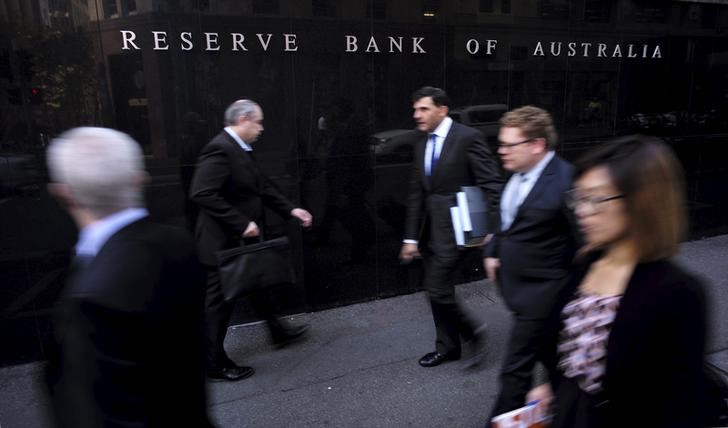(Bloomberg) -- Australia’s central bank cut its benchmark interest rate and said it was ready to do so again as it became “increasingly clear” the coronavirus would cause major disruption to economic activity worldwide, according to minutes of its March 3 meeting.
The board reduced the cash rate to 0.5% “to provide additional support” to employment and the economy, the Reserve Bank said in the minutes released Tuesday in Sydney. Members also agreed on “the importance of monitoring the rapidly changing developments closely in subsequent weeks and maintaining contact to assess the implications” of the outbreak for the economy.
The central bank is due to announce further policy steps Thursday, when it is expected to cut rates again to 0.25%, the effective lower bound, opening the door to unorthodox measures. On Monday, it said it would boost liquidity and stood ready to buy government bonds to help ease stresses in funding markets.
The Australian dollar was little changed after the release and was trading at 61.40 U.S. cents at 12:35 p.m. Australian government bonds held losses, with the 10-year yield up 12 basis points to 1.03%.
The RBA’s easing two weeks ago heralded a global policy push to support markets and economies reeling from the spread of the coronavirus. Just hours after Australia lowered its cash rate, the Federal Reserve cut half a percentage point and then moved by another full percentage point on Sunday together with the announcement of a bond buying program.
“With the benefit of hindsight, the RBA’s 25 basis point rate cut in March now looks rather meek,” said Sally Auld, a senior strategist for interest rates at JPMorgan Chase (NYSE:JPM) & Co. in Sydney.
She expects the following beyond a 25 basis-point cut from the meeting Thursday:
- enhanced forward guidance, possibly tying the outlook for the cash rate to outcomes-based guidance;
- unconventional monetary policy in the form of yield curve control, or interest rate targets;
- purchases of Australian Commonwealth Government Bonds; and the possibility of
- flattening the inter-bank rate on excessive reserves spread (from the cash rate target less 25 basis points to a flat spread on the policy rate target). Were the RBA to announce this, then it opens up the possibility of a 50 basis point easing
“It was becoming increasingly clear that COVID-19 would cause major disruption to economic activity around the world,” the bank said in the minutes. “Growth in output in China and other economies was expected to be significantly lower in the first half of the year.”
The RBA said the outbreaks beyond China and intensified efforts to contain its spread “raised the prospect of a broader and more extended disruption to the global economy.”
Latest data out of China, Australia’s top trading partner, showed an even deeper slump than analysts feared, underscoring the fallout facing the global economy. Industrial output plunged 13.5% in January and February from a year earlier, retail sales fell 20.5%, and fixed-asset investment dropped 24.5%.
Central banks from Stockholm to Tokyo have increased monetary policy support to assist economic activity as the global economy hurtles toward its first recession since 2009. New Zealand cut its benchmark rate by 75 basis points Monday and its government announced a fiscal stimulus program today of around 4% of GDP.
Australia’s government is considering additional stimulus to follow up last week’s A$17.6 billion package that together with the RBA’s moves has fiscal and monetary policy moving in concert. State governments have also announced stimulus packages.
The RBA cut three times last year, moves that helped revive property prices. It said in the minutes that members discussed the risk of a further reduction encouraging additional borrowing when there is already “a strong upswing” in housing. It discounted that risk as not “particularly high” when weighed against the current heightened uncertainty and the benefits from lower rates.
Data from the statistics bureau Tuesday showed house prices advanced 3.9% in the final three months of last year from the prior quarter and 2.5% from a year earlier.
The Australian dollar has fallen almost 13% this year as the currency takes on its traditional role as a shock absorber for the domestic economy in times of crisis.
(Updates with comment from economist in sixth paragraph.)
